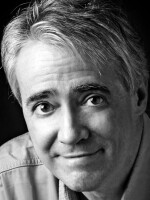SCOTT SIMON, HOST:
Fighting and violence continue in a region of the Democratic Republic of Congo. In early February, 3,000 people were killed in Goma - a city of 2 million - in just a few days. A rebel force backed by troops from neighboring Rwanda took control of Goma, and they are now threatening to march on the Congolese capital. Emmet Livingstone joins us now from Goma. Emmet, thanks so much for being with us.
EMMET LIVINGSTONE: Thanks for having me.
SIMON: Of course, this is a conflict between Congolese fighters and this rebel force, the March 23 Movement, or M23. What is Goma like under rebel control?
LIVINGSTONE: Well, life at the moment is slowly getting back to normal in Goma. There are cars on the streets. Shops are opening, at least for part of the day. And, of course, M23 fighters are posted around the city. But there's still a sense of foreboding. Lots of people aren't venturing out at night, and many people I've spoken to say that they fear the M23, which has begun imposing a parallel government in the city. Every Saturday, for example, people are now forced out into the streets to clean them up. This is a traditional practice in the region, but it's rarely enforced. Most people are obeying, or so they told me, because they're afraid of the consequences.
SIMON: Help us understand this region better. It has a vast supply of critical minerals, doesn't it?
LIVINGSTONE: It does. So Congo, in general, has a vast supply of critical minerals. It's most notable for its cobalt supplies, but which is far away from this region around Goma. The minerals that are most prevalent here and most of interest internationally are coltan, which is mined in the region and which is used in the manufacture of electronic products. That said, there's a narrative that this conflict is all about minerals, but it's much more complicated than that. It's probably one factor among many. Seizing Goma, for example, has no obvious benefit for the minerals trade.
SIMON: Well, how serious, then, is M23's threat to march on the capital Kinshasa?
LIVINGSTONE: In a word, serious. But for the moment, it's probably a long way off. The thing to bear in mind is that the M23 isn't simply an armed group. It's supported by the Rwandan army, which is one of the most capable in sub-Saharan Africa. And if you compare it with the Congolese army, that - well, there's really no comparison at all. That army has been devastated by corruption for years. And to give you a flavor, Congolese soldiers are paid about $100 a month, if they're paid at all. But how far the M23 and Rwanda will go really depends on the political context. Unless there are serious concessions from Congo, or unless there's very serious pushback internationally, this conflict will likely keep going.
SIMON: So no prospect of a ceasefire at the moment?
LIVINGSTONE: The M23 declared a unilateral ceasefire, but it's important to understand that this was unilateral. The Congolese government never agreed to it, and it very, very quickly broke down. I think within a day or two, fighting had started again, and the M23 started pushing in the neighboring province of South-Kivu.
SIMON: And what's the humanitarian situation like there in Goma, Emmet?
LIVINGSTONE: Well, it's been devastating. If you scroll back a few years, that the rebels had kept Goma under siege for two years, and nearly 800,000 displaced people were living in squatter camps around the city. And these camps, they were filled with hunger and violence and disease. And then the capture of the city itself came, and that was brutally violent. And the latest figures we have put the death toll at about 3,000 people. If you think about it, this number is absolutely staggering. We're talking about 3,000 people killed over the course of a few days.
SIMON: Reporter Emmet Livingstone in Goma. Thank you very much for being with us.
LIVINGSTONE: Thank you. Transcript provided by NPR, Copyright NPR.
NPR transcripts are created on a rush deadline by an NPR contractor. This text may not be in its final form and may be updated or revised in the future. Accuracy and availability may vary. The authoritative record of NPR’s programming is the audio record.



